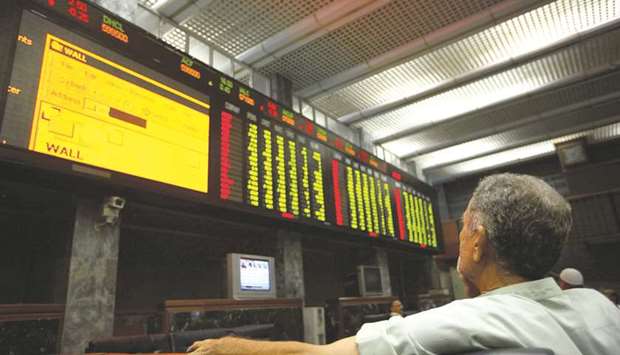Maintaining a steady path and supported by an overall performance by key sectors, Pakistan’s economy has accomplished a decent growth rate of 5.79%, highest in 13 years since 2004-05 when it grew by 7.52%.
With the rate of inflation still below 4% in the first nine months of the current fiscal year, this high-growth-low-inflation scene can be compared to a text book description of an economy at the take-off stage unless rising external vulnerabilities revert back to a crash landing and need for stabilisation during the upcoming political transition.
Some critics may still like to highlight slippages on some targets including the GDP growth target itself 5.79% growth instead of the 6% target – and a particularly lower than anticipated output by the industrial sector.
Yet it is heartening that the agriculture and services sectors performed better than targeted. This in fact partly compensated for the industrial sector’s growth.
Most of the numbers approved by the National Accounts Committee for GDP performance are subject to the usual revision based on availability of actual numbers for the entire fiscal year.
This is particularly crucial for the current year because provisional estimate GDP and Gross Fixed Capital Formation (GFCF) have been worked out on the latest data available for six to eight months and projected for the whole year. The current scene can be compared to a textbook description of an economy at the take-off stage unless rising external vulnerabilities revert back to a crash landing
The PML-Nawaz government was quick to claim the credit that its policies had pulled the economy out of the 2008-13 stagnation.
“Due to our policies, the growth rate improved to 4.05% in the first year and has since maintained an upward trajectory, culminating in the current years’ highest growth rate of 5.79%. The average increase during the last five years has been 4.76%”, said prime minister’s adviser on finance Dr Miftah Ismail.
What needs to be deeply studied in the coming months is why the industrial sector stayed short of expectation?
This is more important as energy shortages, considered to be a key constraint to industrial activities, stood addressed to a large extent and the sector received uninterrupted energy supplies. Equally strange is a miserly 1.84% growth witnessed in electricity generation and distribution, and gas distribution, against a hefty target of 12.5% set for the current year.
What is interesting is a flat growth rate of 8.2% in small and household manufacturing over the third year running which may be attributed to poorer documentation.
Dr Ismail plays down slower industrial growth of 5.8% against 7.3% target, saying the industrial sector is maintaining the upward growth trajectory and has reached the highest level of growth in the last 10 years.
Likewise, Large Scale Manufacturing touched 6.13% growth slightly less than the 6.3% target during the first eight months of the current fiscal, the highest in last 11 years.
The adviser believed the delayed sugarcane crushing could have a part in lower industrial production. On the whole, the commodity producing sectors are estimated to have grown by 4.84% this year against a target of 5.4%.
The agriculture sector has also preformed impressively at 3.8% highest in 13 years – and surpassed 3.5% growth target as production of all major crops are reported to have registered significant growth.
The rise in production of three important crops namely rice, sugarcane and cotton was estimated at 8.7%, 7.4%, and 11.8% respectively. On the contrary, decline in production, although provisional, was estimated at 4.4% for wheat crop and 7.1% for maize.
Together, important crops posted a healthy growth rate of 3.57% against 2% target while other crops increased by 3.33% against 3.2% target. Cotton ginning also contributed significantly with a 8.72% growth rate compared to 6.5% target and last year’s growth of 5.6%. With 3.76% growth, livestock was close to 3.8% while forestry sub-sector stayed far behind the 10% target at 7.17% – almost half the 14.5% growth delivered last year.
On the whole, the industry is estimated to have grown 5.8% against a target of 7.3% and revised growth of 5% last year. Here the manufacturing showed a 6.24% growth instead of the targeted 6.4% and 5.3% growth last year.
Large scale manufacturing posted a 6.13% growth, slightly below its 6.3% target but much better than last year’s 5% increase. Major contributors to this growth were cement (12%), tractors (44.7%), trucks (24.41%) and petroleum products (10.26%).
Construction, another priority sector of the current government, also increased by 9.13%, against 9% increase last year, and missed by a wide margin the target of 12.1%.
The major contribution to 5.79% GDP growth rate came from 3.85% share from the services sector. The remaining 1.94% share to GDP came from industrial sector (1.21%) and agriculture (0.73%). The services sector has achieved 6.43% growth during current fiscal year second year in a row to have achieved above 6% growth but was primarily driven by general government services aka salary increases, inflation and other public sector expenditures.
Transport, storage and communication services performed the worst in at least three years at 3.58% growth.
This also missed the 5.1% target for the current year with significant gap. Wholesale and retail trade improved by 7.5%, exceeding 7.2% target and better than last three years.
Financial and insurance services at 6.13%, not only missed the 9.5% growth target, but performed poorer than previous two years of 7.2% and 10.7% growth.
The size of GDP at current market prices was computed at Rs34.396tn for 2017-18, showing an expansion of 7.6% over Rs31.963tr for 2016-17.

A trader is monitoring the index at Karachi Stock Exchange in Pakistan (file). Maintaining a steady path and supported by an overall performance by key sectors, Pakistan’s economy has accomplished a decent growth rate of 5.79%, highest in 13 years since 2004-05 when it grew by 7.52%.
